Adventure Awaits: Hiking Trails and Scenic Views at Pingliang Liupan Mountain
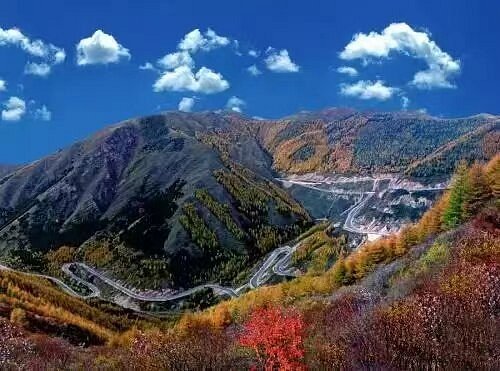
An Essential Guide to Visiting Pingliang Liupan Mountain
Nestled in the heart of Gansu Province, Pingliang Liupan Mountain emerges as a breathtaking tapestry woven from nature’s finest threads and deep cultural roots. This striking mountain range, with its rugged peaks and lush valleys, beckons adventurers and tranquility seekers alike. It serves not only as a picturesque escape but also as a significant historical site where the teachings of Taoism, Buddhism, and Confucianism have intermingled for over 1,500 years.
As you traverse the scenic trails of Liupan Mountain, you will be enveloped by the crisp mountain air, vibrant flora, and the soothing sounds of nature. The landscapes are dotted with remarkable rock formations and serene lakes, inviting you to explore hidden gems around every corner. Whether you’re hiking through the Danxia landforms, meditating at ancient temples, or simply soaking in the panoramic views, each moment here is an opportunity to reconnect with nature and history.
Pingliang Liupan Mountain is not just a destination; it’s a journey through time and a celebration of the natural world. With its temperate climate and diverse offerings, it’s the perfect year-round getaway, especially in the vibrant colors of spring and autumn. Prepare to embark on an unforgettable adventure where the beauty of the mountains and the richness of Chinese heritage converge seamlessly.
In This Guide
- An Essential Guide to Visiting Pingliang Liupan Mountain
- The Rich History and Legends of Pingliang Liupan Mountain
- Main Highlights: What You Absolutely Can’t Miss
- Planning Your Visit: A Practical Guide
- Tickets: Prices, Booking, and Tips
- How to Get There: A Complete Transportation Guide
- Local Cuisine and Accommodation Nearby
- Frequently Asked Questions
- Final Thoughts on Your Trip
The Rich History and Legends of Pingliang Liupan Mountain
Nestled in the eastern region of Gansu Province, Pingliang Liupan Mountain stands as not only a natural wonder but also a significant historical landmark steeped in rich narratives and legends. This majestic mountain range, part of the broader Liupan Mountains, has been a cradle for civilization and spirituality for thousands of years.
The history of Pingliang can be traced back to ancient times, with evidence of human habitation dating back 200,000 to 300,000 years. Archaeological findings suggest that this area was one of the early centers of agriculture in China, with cultivation practices emerging around 3,000 years ago. The term “Pingliang” was first recorded in 358 AD when it referred to a shire, marking the beginning of its formal recognition in Chinese history.
Throughout the centuries, the Liupan Mountain has been revered as a sacred site, particularly in Taoism. Kongtong Mountain, the most famous peak within the Liupan range, is celebrated as the ancestral mountain of Taoism and boasts a rich tapestry of cultural and religious history. It is here that Taoism, Buddhism, and Confucianism have coexisted in harmony for over 1,500 years, attracting pilgrims and scholars alike who seek enlightenment amidst its serene landscapes.
The legends entwined with Liupan Mountain add to its allure. One popular tale speaks of the Queen Mother of the West, a revered figure in Chinese mythology who is said to have resided in the mountain’s hidden grottos. According to legend, she bestowed immortality to those who found her sacred abode, drawing countless seekers to the region in hopes of encountering her divine presence.
Moreover, the natural beauty of the mountain is complemented by its unique geological features, characterized by the striking Danxia Landform, which showcases bizarre rock formations and deep gorges, further enriching its mystical reputation. The area has become a national scenic area, celebrated not only for its breathtaking views but also for the historical footprints left by various dynasties that once flourished here.
In more recent history, Liupan Mountain played a crucial role during the Chinese Revolution, serving as a refuge and strategic point for revolutionary forces. Its dense forests provided cover and resources necessary for sustenance and survival during tumultuous times, cementing its place in the narratives of modern Chinese history.
Today, visitors to Pingliang Liupan Mountain are not merely exploring a mountain range; they are stepping into a realm where ancient history meets legend, where each trail and rock formation tells a story of the past. As you wander through its lush landscapes or climb to its peaks, you can’t help but feel the weight of history and the whispers of legends echoing around you, making your journey a profound connection to the very essence of Chinese culture.
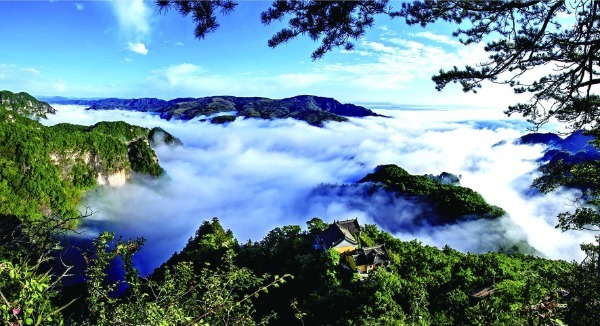
Pingliang Liupan Mountain.
Main Highlights: What You Absolutely Can’t Miss
When visiting Pingliang Liupan Mountain, there are several remarkable highlights that you simply cannot afford to miss. This stunning region, known for its breathtaking landscapes and cultural richness, offers a variety of experiences that cater to nature lovers, history enthusiasts, and spiritual seekers alike.
Kongtong Mountain: The Heart of Taoism
Kongtong Mountain, located just 12 kilometers (7.5 miles) west of Pingliang, is the most famous attraction in the area. Revered as the ancestral mountain of Taoism, it serves as a spiritual sanctuary that has embraced a harmonious coexistence of Taoism, Buddhism, and Confucianism for over 1,500 years. Visitors can explore the unique Danxia landform, characterized by its striking rock formations and mysterious caves. The mountain is not only a natural wonder but also a historical site, with ancient trails and relics that tell stories of past generations. Hiking through its scenic paths provides an invigorating experience, blending the beauty of nature with rich cultural heritage.
Willow Lake Park: A Serene Retreat
For those seeking a tranquil escape, Willow Lake Park is an ideal destination. This picturesque park, adorned with lush willows and serene waters, offers a peaceful setting for leisurely strolls or quiet reflection. Ideal for family picnics or a romantic outing, the park’s scenic beauty and well-maintained paths make it a perfect spot to unwind and soak in the natural surroundings.
Queen Mother Palace Grottoes: A Glimpse into History
Don’t miss the Queen Mother Palace Grottoes, a fascinating historical site that showcases ancient artistry and religious significance. Carved into the mountainside, these grottoes are adorned with intricate sculptures and murals that depict various deities and historical events. Exploring this site offers a unique insight into the spiritual life of the region, making it a must-visit for history buffs.
Longquan Temple: Spiritual Serenity
Longquan Temple is another significant site that reflects the deep spiritual roots of the area. Nestled in the mountains, this temple provides a peaceful atmosphere for meditation and contemplation. The architecture and serene surroundings make it a perfect place to learn about local religious practices and enjoy the tranquility of nature.
Wulongshan Scenic Area: Nature’s Masterpiece
For avid hikers and nature enthusiasts, the Wulongshan Scenic Area offers breathtaking views and diverse wildlife. The area is rich in flora and fauna, making it a perfect spot for birdwatching and photography. The well-marked trails lead you through lush forests and stunning landscapes, providing opportunities to connect with the natural beauty of the Liupan Mountains.
Seasonal Delights: When to Visit
Pingliang experiences a temperate semi-dry continental monsoon climate, making spring and autumn the best seasons to visit. During these times, the weather is pleasantly mild, enhancing your outdoor adventures and sightseeing experiences.
Local Flavors: Taste the Region
While exploring Pingliang, be sure to indulge in local delicacies. The region is known for its fresh apples and walnuts, which make delightful snacks or souvenirs to take home. Sampling the local cuisine not only satisfies your taste buds but also allows you to connect with the culture of the area.
Getting There: Easy Access
Pingliang is conveniently located about 350 kilometers (217 miles) from Lanzhou, with regular bus services available. The city itself boasts two main bus stations, making it easy for travelers to access Kongtong Mountain and other attractions.
In summary, Pingliang Liupan Mountain is a treasure trove of natural beauty, spiritual heritage, and cultural history. Whether you’re hiking the majestic Kongtong Mountain, meditating at Longquan Temple, or enjoying a peaceful day at Willow Lake Park, each experience offers a unique glimpse into the heart of this enchanting region. Don’t miss the chance to explore these highlights that truly make Pingliang a mesmerizing destination!
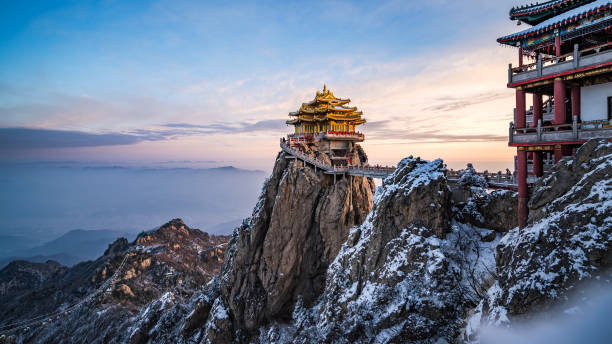
Pingliang Liupan Mountain.
Planning Your Visit: A Practical Guide
Visiting Pingliang Liupan Mountain offers an exciting adventure for international travelers seeking natural beauty and cultural insights in China. Here’s a comprehensive guide to help you plan your visit.
Getting There
Pingliang is approximately 350 kilometers (217 miles) from Lanzhou, the capital of Gansu Province. The most convenient way to reach Pingliang is by bus, with multiple daily departures from Lanzhou.
- Bus Stations:
- West Station: Located on Gonglu Street, this station provides special buses that go directly to Kongtong Mountain.
- East Station: Situated at No. 68, Jiefang Road (North), this station also offers regular services to Pingliang.
If you prefer a more scenic route, consider renting a car for the journey, allowing you to explore the stunning landscapes at your own pace.
Best Time to Visit
Pingliang enjoys a temperate semi-dry continental monsoon climate, making spring (April to June) and autumn (September to October) the ideal seasons for a visit. During these months, the weather is pleasant with moderate temperatures and lower rainfall, perfect for hiking and outdoor activities.
What to See and Do
Kongtong Mountain, a branch of the Liupan Mountain range, is the highlight of the area. It is a famous national scenic area, rich in both natural beauty and Taoist culture.
-
Kongtong Mountain: Explore its unique Danxia landform, characterized by striking rock formations and caves. The mountain has a rich history as a religious site, where Taoism, Buddhism, and Confucianism have coexisted for over 1,500 years.
-
Other Attractions: Besides Kongtong Mountain, consider visiting:
- Willow Lake Park: A tranquil spot ideal for relaxation and leisurely walks.
- Queen Mother Palace Grottoes: A historical site featuring intricate carvings and ancient art.
- Wulongshan Scenic Area: Perfect for those seeking stunning vistas and hiking opportunities.
Local Cuisine and Specialties
While in Pingliang, don’t miss out on sampling local delicacies. The region is known for its fresh apples and walnuts, which make for delightful snacks or souvenirs. Additionally, try local dishes that feature Gansu’s rich culinary heritage, such as hand-pulled noodles (lamian) and various dumplings.
Accommodation
Pingliang offers a range of accommodation options, from budget hostels to mid-range hotels. Consider booking in advance, especially during peak travel seasons, to secure the best rates and locations.
Travel Tips
- Pack Accordingly: Bring comfortable hiking shoes, a light jacket, and plenty of water, especially if you plan on exploring the mountainous terrain.
- Cash: While larger establishments may accept credit cards, it’s wise to carry cash for smaller vendors and rural areas.
- Respect Local Customs: As you explore religious sites, be mindful of local customs and dress modestly when necessary.
Safety and Health
Pingliang is generally safe for tourists, but it’s always advisable to stay alert and exercise common sense, especially in remote areas. Ensure you have travel insurance and carry any necessary medications, as pharmacies may not always be readily available.
By following this guide, you’re well-prepared to enjoy the breathtaking landscapes, rich history, and vibrant culture of Pingliang Liupan Mountain. Enjoy your adventure!
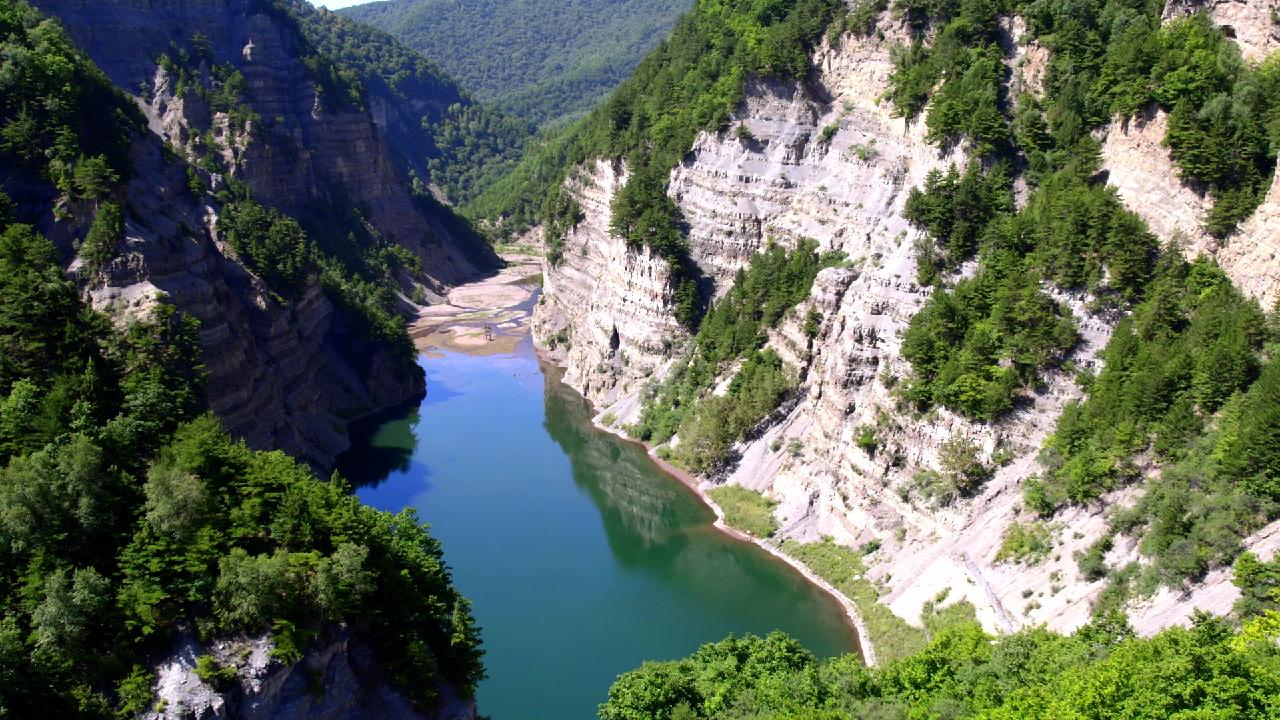
Pingliang Liupan Mountain.
Tickets: Prices, Booking, and Tips
When planning your visit to the stunning Liupan Mountain in Pingliang, it’s essential to understand ticket prices, booking options, and a few handy tips to enhance your experience.
Ticket Prices
Entry fees for Liupan Mountain vary slightly depending on the season and specific attractions within the park. Generally, you can expect to pay around CNY 50 (approximately USD 7) for a standard entrance ticket. If you are planning to explore additional areas or engage in special activities, such as guided tours or transportation within the park, prepare for extra costs that can range from CNY 20 to CNY 100 (USD 3 to 15).
Booking Tickets
Tickets can be purchased at the entrance of the park. However, during peak seasons, such as spring and autumn, it’s advisable to arrive early to avoid long queues. For those who prefer to plan ahead, some online travel platforms offer ticket purchases in advance, providing an option to skip the lines. If you’re traveling as part of a group, consider checking with local tour operators who may offer package deals that include transportation and guided tours.
Tips for Your Visit
-
Best Time to Go: The ideal seasons to visit Liupan Mountain are spring (April to June) and autumn (September to October) when the weather is mild and the scenery is particularly vibrant.
-
Transportation: If you’re coming from Lanzhou, there are daily buses that connect the two cities. Make sure to check the schedules ahead of time, as they can vary. The main bus station in Pingliang is conveniently located for access to Liupan Mountain.
-
Dress Appropriately: The weather in the mountains can change quickly, so wear layers and bring a light jacket, even in warmer months. Comfortable hiking boots are recommended for exploring the trails.
-
Stay Hydrated and Pack Snacks: While there are some facilities within the park, having water and snacks on hand will ensure you maintain your energy levels during your hikes.
-
Respect Nature: Liupan Mountain is not only a natural wonder but also a culturally significant site. Follow the park’s rules, stay on marked trails, and leave no trace to help preserve its beauty for future visitors.
By keeping these details in mind, your visit to Liupan Mountain promises to be an unforgettable adventure filled with breathtaking views and rich cultural experiences. Enjoy your journey into this mesmerizing part of China!
How to Get There: A Complete Transportation Guide
Reaching the stunning Pingliang Liupan Mountain is a journey filled with opportunities to explore the breathtaking landscapes of Gansu Province. Whether you prefer the convenience of public transportation or the adventure of driving through scenic routes, here’s a comprehensive guide to getting there.
Getting to Pingliang
By Air
The nearest major airport to Pingliang is Lanzhou Zhongchuan Airport (LHW), located approximately 350 kilometers (217 miles) away. Several domestic flights connect Lanzhou with major cities across China. Once you arrive at the airport, you can proceed to Pingliang via bus or train.
- Airport to Lanzhou City Center: Take the airport shuttle bus to the Lanzhou city center, where you can find transportation options to Pingliang.
By Train
From Lanzhou, you can catch a train to Pingliang. The train ride offers beautiful views of the surrounding landscapes and typically takes about 4 to 5 hours. The trains depart from the Lanzhou Railway Station. Make sure to check the schedule in advance, as the frequency may vary.
- Purchase Tickets: Tickets can be bought at the station or booked online through various travel apps.
- Duration: The train journey usually takes around 4-5 hours, so plan accordingly.
By Bus
Buses are a popular and economical option for traveling to Pingliang from Lanzhou. There are two primary bus stations in Lanzhou offering services to Pingliang:
-
Lanzhou West Bus Station (西站): Located on Gonglu Street, this station features direct buses to Pingliang and the nearby Kongtong Mountain. Buses typically leave every 30 minutes throughout the day.
-
Lanzhou East Bus Station (东站): Situated at No. 68, Jiefang Road (North), this station also provides services to Pingliang.
Travel Time: The bus journey takes approximately 5 to 6 hours, depending on traffic conditions.
By Car
For those who prefer to drive, renting a car offers flexibility and the chance to explore the scenic routes at your own pace. The drive from Lanzhou to Pingliang is approximately 350 kilometers (217 miles) and takes about 4 to 5 hours.
- Route: Take the G22 and G310 highways, which are well-maintained and offer picturesque views of the countryside. Be sure to check for any road conditions or closures before you set out.
- Car Rentals: Various car rental services are available at Lanzhou Zhongchuan Airport or in the city.
Local Transportation in Pingliang
Once you arrive in Pingliang, you can explore the local attractions, including the stunning Liupan Mountain, using the following methods:
- Public Buses: Pingliang has a local bus network that connects various attractions, including Kongtong Mountain.
- Taxis and Ride-Hailing Services: Taxis are readily available, and ride-hailing apps like Didi are convenient options for getting around.
- Walking: Many attractions in Pingliang are within walking distance of each other. Enjoy the local scenery as you stroll through the city.
Final Tips
- Travel Seasons: The best times to visit Pingliang and Liupan Mountain are during spring and autumn when the weather is pleasant.
- Weather Considerations: Be sure to check the local weather conditions before your visit, especially if you plan to hike in the Liupan Mountains.
With this guide in hand, you’re well-prepared to embark on your adventure to Pingliang Liupan Mountain. Enjoy the journey!
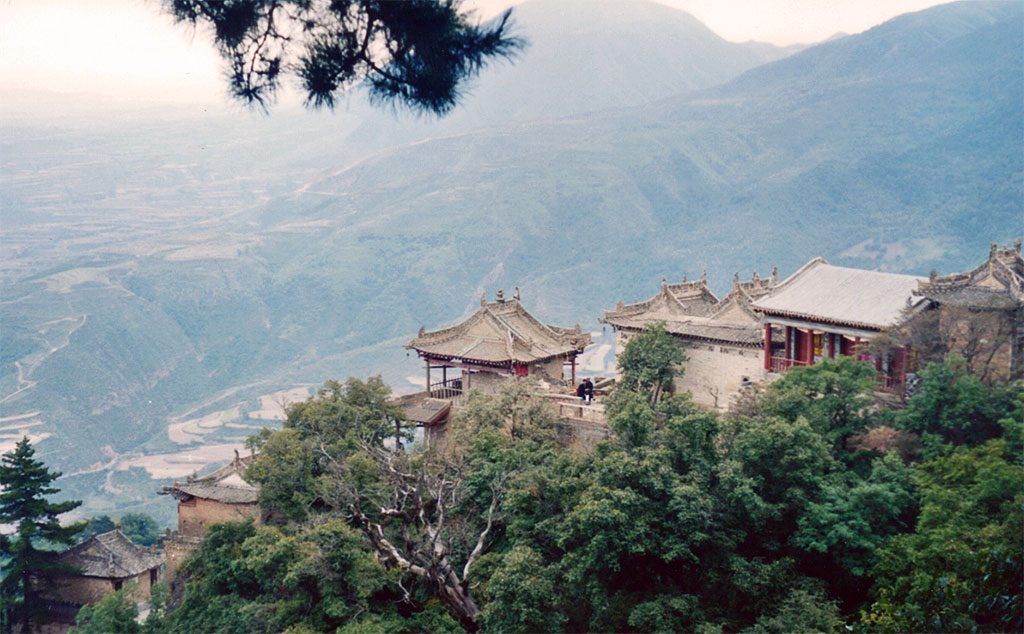
Pingliang Liupan Mountain.
Local Cuisine and Accommodation Nearby
When visiting the stunning Pingliang Liupan Mountain, you’ll find a delightful array of local cuisine and comfortable accommodation options nearby that will enhance your travel experience.
Local Cuisine
Pingliang’s culinary scene is a reflection of its rich agricultural heritage. Here are some must-try dishes and local specialties:
- Liupan Mountain Lamb: Known for its tender and flavorful meat, this dish showcases the region’s high-quality lamb, often prepared in a fragrant stew or grilled to perfection.
- Noodles: This area is famous for its hand-pulled noodles, often served in a savory broth with various toppings such as vegetables and meats—perfect for a warm meal after a day of exploring.
- Walnuts and Apples: Try the local walnuts and apples, as Pingliang is renowned for these crops. They make a great snack or a wholesome addition to your meals.
- Taoist Vegetarian Dishes: Given the area’s Taoist culture, you can find various vegetarian dishes that emphasize fresh, seasonal vegetables and unique flavors, often prepared using traditional methods.
For a culinary adventure, consider dining at Liu Pan Mountain Restaurant, which specializes in local dishes and offers a cozy atmosphere. Alternatively, Kongtong Mountain View Eatery serves regional cuisine with a view of the breathtaking landscapes, making it a perfect stop after a day of hiking.
Accommodation Options
After a day of exploring, unwind in one of the comfortable accommodations near Pingliang Liupan Mountain:
- Kongtong Mountain Resort: Nestled in the mountains, this resort offers modern amenities and stunning views of the surrounding landscape. It’s an ideal option for nature lovers looking to immerse themselves in the tranquility of the area.
- Pingliang City Hotels: For those seeking convenience, the hotels in Pingliang city center—such as the Pingliang Grand Hotel—offer comfortable rooms and easy access to local attractions. These hotels often feature dining options and other amenities to cater to international travelers.
- Guesthouses: For a more intimate experience, consider staying at one of the local guesthouses. These often provide a more authentic feel of the region and allow you to interact with the locals. Look for places that offer home-cooked meals, which can be a great way to sample local flavors.
With delicious food and welcoming accommodations, your visit to Pingliang Liupan Mountain will be a memorable culinary journey amidst stunning natural beauty.
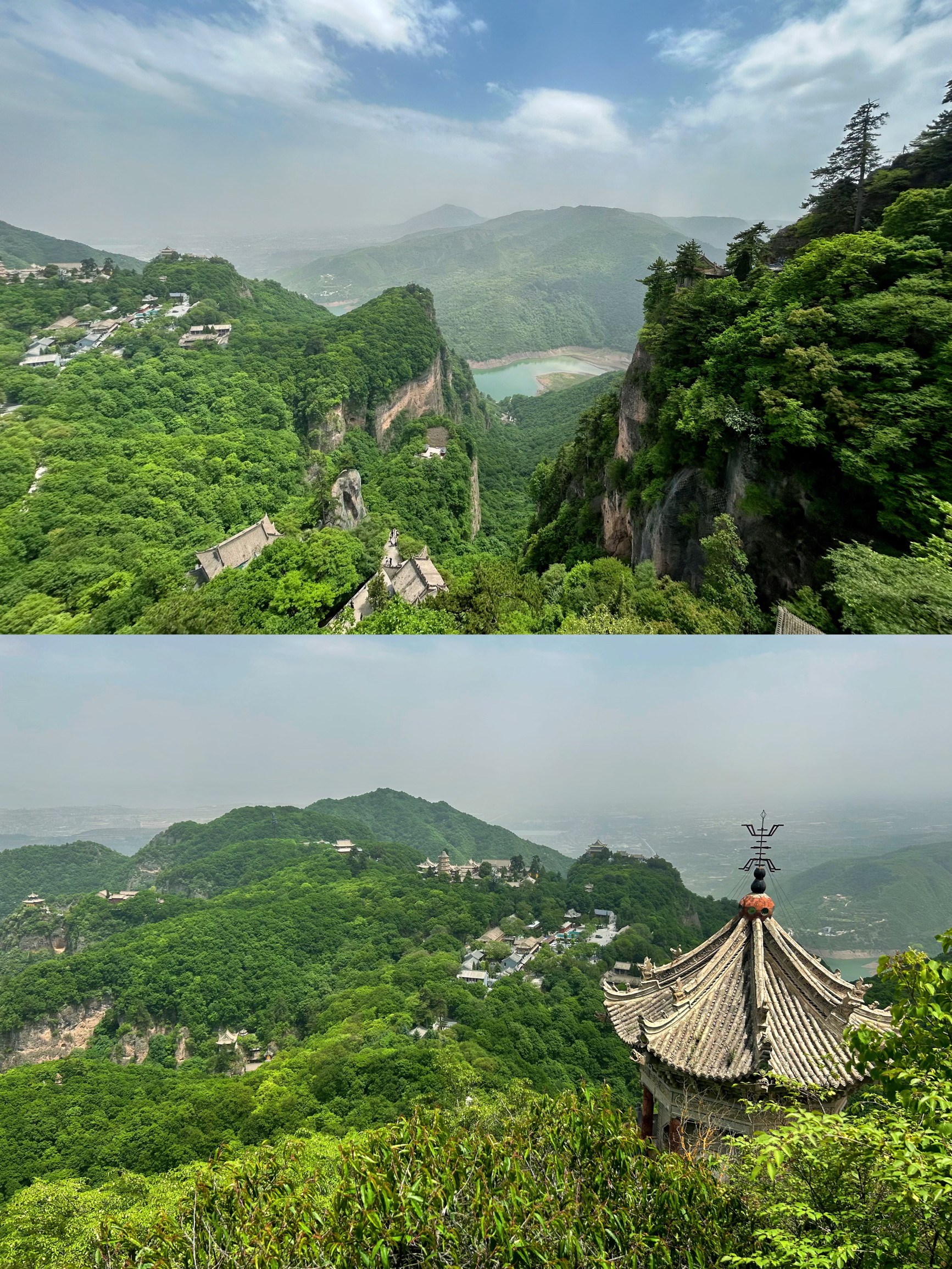
Pingliang Liupan Mountain.
Frequently Asked Questions
Frequently Asked Questions about Pingliang Liupan Mountain
1. How do I get to Pingliang Liupan Mountain from Lanzhou?
To reach Pingliang Liupan Mountain from Lanzhou, you can take one of the several daily buses that operate between the two cities. The journey covers approximately 350 kilometers (217 miles) and typically takes around 5-6 hours. Buses depart from the west and east bus stations in Pingliang.
2. What is the best time to visit Pingliang Liupan Mountain?
The ideal times to visit are during spring (April to June) and autumn (September to November) when the weather is mild and the scenery is most beautiful. During these seasons, you can enjoy pleasant temperatures and vibrant landscapes.
3. What should I wear while visiting the mountain?
Dress in layers, as temperatures can vary significantly from day to night. Comfortable hiking shoes are a must for exploring the trails. A light jacket is recommended, especially in the cooler months or if you plan to hike to higher elevations.
4. Are there any entry fees for visiting Liupan Mountain?
Yes, there is typically an entry fee to access the scenic areas of Liupan Mountain. Prices may vary based on the specific attractions you wish to visit, so it’s advisable to check current rates before your trip.
5. What activities can I do at Liupan Mountain?
Visitors can enjoy a variety of activities, including hiking, sightseeing, and exploring the rich cultural sites. The area is known for its stunning natural landscapes, unique rock formations, and historical significance related to Taoism, Buddhism, and Confucianism.
6. Are there accommodations available near Liupan Mountain?
Yes, there are several accommodation options in and around Pingliang, ranging from hotels to guesthouses. It’s best to book in advance during peak tourist seasons to secure your stay.
7. Is it safe to hike alone in Liupan Mountain?
While many trails are considered safe, it’s always recommended to hike with a companion, especially if you’re unfamiliar with the area. Be sure to inform someone of your plans and carry enough supplies, including water and snacks.
8. What local specialties should I try while in Pingliang?
When visiting Pingliang, don’t miss out on local specialties such as fresh apples and walnuts, which are renowned in the region. Be sure to explore local markets and eateries to sample authentic Gansu cuisine during your stay.
Final Thoughts on Your Trip
As your adventure through the breathtaking landscapes of Pingliang Liupan Mountain draws to a close, take a moment to reflect on the myriad experiences that have enriched your journey. From the towering heights of Kongtong Mountain, where ancient Taoist culture intertwines with stunning natural beauty, to the serene tranquility of Willow Lake Park, each destination has offered a unique glimpse into the heart of this enchanting region.
You may have marveled at the dramatic Danxia formations, breathed in the crisp mountain air, and perhaps even found yourself enchanted by the harmonious blend of history and nature. Whether you trekked the trails that tell the stories of the past or simply paused to take in the awe-inspiring vistas, the Liupan Mountains have a way of leaving an indelible mark on your soul.
As you prepare to bid farewell, remember that your experiences here are not just memories; they are threads woven into the fabric of your travels. Carry the spirit of Pingliang with you—its rich history, vibrant culture, and breathtaking landscapes—as you continue to explore the wonders of the world. Until next time, may your journeys be filled with discovery, inspiration, and the joy of new adventures!